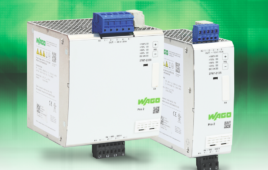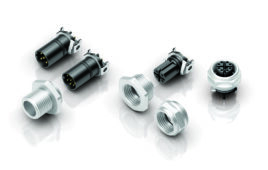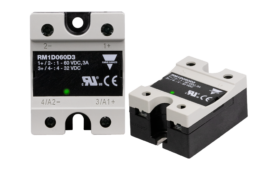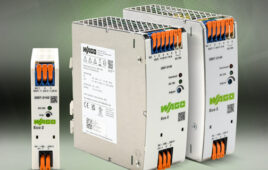Pepperl+Fuchs introduces ML100-8-W divergent beam sensors. Wide beam technology enables these sensors to reliably detect clear materials, very small objects over a large area, as well as glossy materials that can otherwise be a challenge to sense, without the need for a reflector.
“Most transparent object detection sensors are aligned to a reflector and taught the reflected light level of the reflector. But with the ability to independently detect clear shrink wrap film, PET plastic bottles, automotive glass and other transparent objects without a background, ML100-8-W divergent beam sensors eliminate the time, cost and machine space associated with installing reflectors, making them an ideal solution in material handling and packaging applications,” says Jeff Allison, Product Manager.

ML100-8-W sensors are also well suited for use in assembly, automotive, printing and a wide range of other industries because they can reliably detect small objects such as wires, yarns or pins over a large area. This facilitates reliable parts detection with a forgiving set-up, and without the need to precisely align a laser or small light spot fiber optic head to the object. Additionally, these divergent beam sensors are an effective sensing solution for glossy materials such as foil pouches or shiny PCBs that are often difficult to reliably detect with diffuse mode sensors.
ML100 series sensors feature multi-color LEDs that are visible from 360° over long distances for immediate sensor status detection. They are also highly resistant to ambient light, and feature cross-talk protection to help ensure the integrity of sensor outputs. Unique PowerBeam alignment with an intense light spot and an industry-standard mounting pattern reduce set-up time, and fully metal bushings provide extremely durable operation even in extended temperature environments from -30° C to +60° C (-22° F to +140° F). These UL and cUL listed sensors also reduce energy costs by up to 43 percent compared with competitive models.
Divergent sensing, also known as wide beam sensing, covers a larger surface area of the target to optimize the likelihood that some part of the object is perpendicular to the light beam and minimize the occurrence of sensing voids.
Pepperl+Fuchs
www.pepperl-fuchs.us
::Design World::
Filed Under: Factory automation, SENSORS, TEST & MEASUREMENT, ELECTRONICS • ELECTRICAL





Tell Us What You Think!